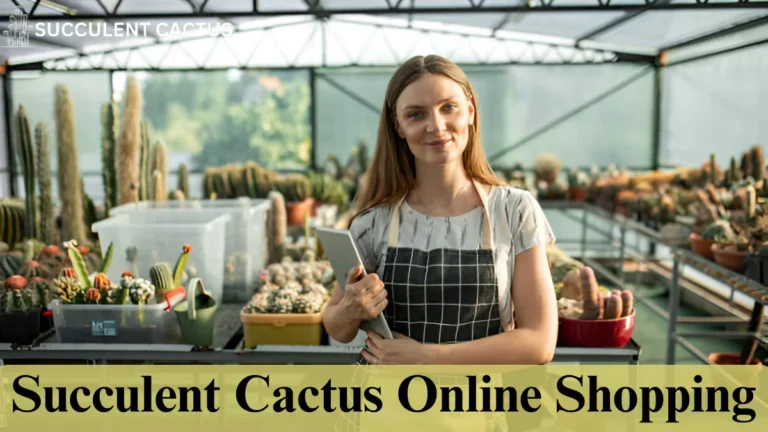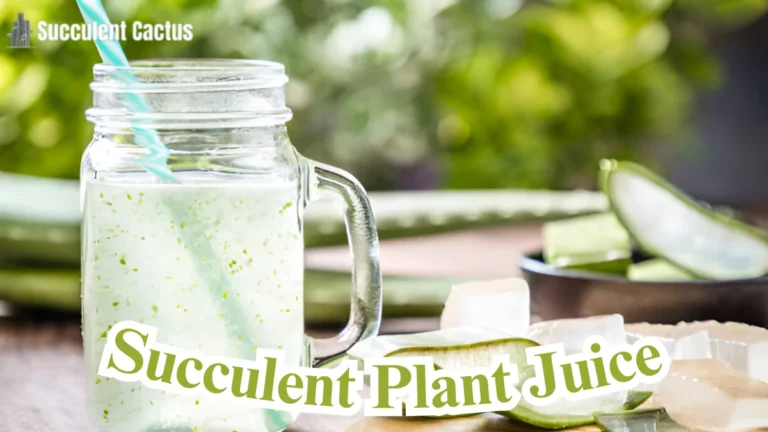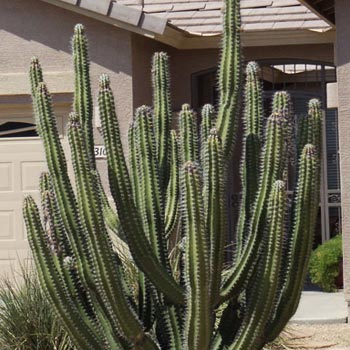Succulent Plant Toxic to Cats: A Complete Guide for Pet Owners

Succulents have become an interior design trend, known for their minimal water requirements, unique aesthetics, and ability to thrive indoors. However, pet owners must be cautious as some succulent plants can be toxic to cats. If your feline friend enjoys chewing on houseplants, it’s crucial to identify harmful succulents, recognize poisoning symptoms, and take preventative measures. This guide covers Succulent Plant Toxic to Cats, their effects, first-aid measures, pet-safe alternatives, and long-term prevention strategies.
Understanding Succulent Toxicity in Cats
How Cats React to Toxic Succulents
When a cats chew or ingest a toxic succulent plant, symptoms vary based on the type of plant and the amount consumed. Common reactions include:
- Mild Symptoms: Drooling, vomiting, diarrhea, and loss of appetite.
- Moderate Symptoms: Lethargy, excessive thirst, and oral irritation.
- Severe Symptoms: Heart irregularities, tremors, seizures, or difficulty breathing.
Case Study: A cat named Luna ingested Kalanchoe leaves. Within an hour, she showed signs of vomiting and drooling. After receiving prompt veterinary treatment, she fully recovered. This highlights the importance of immediate action when a cat ingests toxic succulents.
How to Identify a Toxic Reaction in Cats
If your cat exhibits unusual behavior after exposure to a succulent, look for:
- Changes in eating or drinking habits.
- Increased lethargy or hiding.
- Pawing at the mouth or excessive drooling.
- Dilated pupils, tremors, or rapid breathing.
Tip: If you suspect poisoning, call a veterinarian or pet poison helpline immediately.
Common Toxic Succulent plant for Cats
Aloe Vera
Aloe Vera is a popular houseplant known for its medicinal benefits for humans, but it’s toxic to cats due to saponins and anthraquinones.
Symptoms of Aloe Vera Poisoning:
- Vomiting and diarrhea
- Abdominal pain
- Tremors in severe cases
Safe Alternative: Haworthia, a look-alike plant, is a non-toxic substitute for Aloe Vera.
Kalanchoe (Mother of Thousands)
Kalanchoe is widely known for its colorful flowers but contains cardiac glycosides, which can cause heart issues in cats.
Symptoms of Kalanchoe Poisoning:
- Drooling and vomiting
- Irregular heartbeat
- Seizures (in severe cases)
Tip: Keep Kalanchoe out of reach if you own a cat.
Euphorbia (Crown of Thorns, Poinsettia)
The milky sap in Euphorbia plants causes severe oral irritation and stomach problems in cats.
Symptoms of Euphorbia Poisoning:
- Mouth irritation and excessive drooling
- Redness and swelling of the gums
- Vomiting and diarrhea
Safe Alternative: Opt for Christmas Cactus, which is non-toxic to pets.
Symptoms of Succulent Poisoning in Cats
Mild Symptoms to Watch For
When a cat ingests a mildly toxic succulent, it may show:
- Vomiting and diarrhea
- Loss of appetite
- Mild lethargy
Moderate Symptoms That Require Vet Attention
Certain succulents cause moderate reactions such as:
- Excessive drooling
- Skin or mouth irritation
- Frequent pawing at the mouth
Severe Symptoms That Indicate a Medical Emergency
Ingesting highly toxic succulents like Kalanchoe or Euphorbia can lead to:
- Seizures or tremors
- Irregular heartbeat
- Severe dehydration
Emergency Tip: If you observe any of these signs, take your cat to a vet immediately.
What to Do If Your Cat Eats a Toxic Succulent
Immediate Steps to Take
If you suspect your cat ate a toxic succulent:
- Remove the plant from reach to prevent further ingestion.
- Check your cat’s mouth for plant residue and gently wipe it away.
- Offer water to help flush out toxins.
When to Seek Veterinary Help
You should contact a vet if:
- Your cat vomits multiple times.
- Symptoms persist for more than a few hours.
- You notice severe reactions like tremors or difficulty breathing.
Treatment Options at the Vet
Vets may administer:
- Activated charcoal to absorb toxins.
- Intravenous fluids to prevent dehydration.
- Medication to counteract poisoning effects.
Safe Succulent Alternatives for Cat Owners
Non-Toxic Succulents for Homes with Cats
The following succulents are safe for cats and still offer aesthetic appeal:
| Safe Succulent | Features |
| Haworthia | Aloe-like appearance, non-toxic |
| Christmas Cactus | Safe alternative to Euphorbia |
| Burro’s Tail | Hanging succulent, cat-friendly |
| Blue Echeveria | Rosette-shaped and harmless |
How to Keep Cats Away from Succulents
- Use citrus peels in plant pots (cats dislike citrus scents).
- Spray a vinegar-water mixture around plants.
- Provide cat grass as an alternative.
Creating a Cat-Safe Indoor Garden
- Keep toxic plants on high shelves.
- Use hanging planters to prevent access.
- Offer pet-friendly greenery to satisfy curiosity.
Preventing Future Succulent Poisoning
Training Your Cat to Avoid Plants (as Succulent Plant can be Toxic to Cats)
Cats are naturally curious creatures, which makes them prone to chewing on houseplants. Training them to stay away from succulents requires patience and consistency.
Tips for Training Your Cat
- Use positive reinforcement: Reward your cat with treats or praise when they ignore your plants.
- Provide cat-friendly alternatives: Offer safe plants like cat grass or catnip.
- Use deterrents: Spray a mix of vinegar and water around your succulents to discourage chewing.
- Set up designated play areas: Distract your cat with scratching posts and toys in another part of the house.
A case study involving a cat named Milo showed that after consistent training with citrus-scented sprays and reward-based reinforcement, he stopped chewing on his owner’s succulents entirely.
Using Barriers and Repellents
Another effective way to prevent succulent poisoning is by physically restricting access.
| Method | Effectiveness | How to Implement |
| Hanging planters | High | Place succulents in hanging baskets out of reach. |
| Glass terrariums | High | Enclose toxic succulents in decorative glass containers. |
| Citrus peels | Moderate | Scatter lemon or orange peels around pots (cats dislike citrus). |
| Motion-activated deterrents | High | Devices emit a sound or air blast when a cat approaches. |
Tip: Motion-activated sprays are particularly effective because they startle cats without harming them.
Regular Vet Checkups for a Healthy Cat
Routine checkups ensure your cat stays healthy and free from poisoning risks.
- Schedule yearly vet visits to monitor your cat’s health.
- If your cat frequently chews on plants, discuss potential dietary deficiencies with your vet.
- Keep the number of an emergency pet poison control center handy.
Cat-Proofing Your Home for Succulents
Choosing Safe Locations for Plants
One of the easiest ways to protect your cat is by placing succulents in out-of-reach areas.
Ideal Locations for Succulents in a Cat Household
| Location | Effectiveness | Notes |
| High shelves | High | Ensure they aren’t near furniture your cat can climb. |
| Hanging baskets | High | Ideal for small succulents like string of pearls. |
| Closed terrariums | Very High | Protects plants and adds a decorative element. |
| Separate plant room | Very High | If possible, keep toxic plants in a designated space. |
Alternatives to Toxic Succulents
Many cat-safe plants resemble popular but toxic succulents.
| Toxic Succulent | Safe Alternative |
| Aloe Vera | Haworthia |
| Jade Plant | Christmas Cactus |
| Kalanchoe | Burro’s Tail |
Fact: Many pet-friendly plants require the same care conditions as succulents, making them easy substitutes.
DIY Cat-Safe Plant Arrangements
Consider designing a cat-friendly succulent arrangement.
- Mix non-toxic succulents with decorative rocks and pebbles.
- Use a hanging terrarium to add an artistic touch.
- Incorporate cat grass so your pet has a safe alternative to chew.
The Science Behind Succulent Toxicity in Cats
Toxic Compounds in Succulents
Certain succulents contain chemicals that cause adverse reactions in cats.
| Toxic Compound | Found In | Effects on Cats |
| Saponins | Aloe Vera, Agave | Causes vomiting and diarrhea. |
| Cardiac Glycosides | Kalanchoe | Affects heart function. |
| Euphorbin | Euphorbia family | Causes skin and oral irritation. |
How Cats Metabolize Toxicity
Unlike humans, cats lack certain enzymes needed to break down plant toxins efficiently. Even small amounts of toxic succulents stay in their system longer, leading to prolonged symptoms.
Interesting Fact: A cat’s small body weight makes them more vulnerable to plant poisoning than larger animals.
Why Some Cats Chew on Succulents
Cats may chew on plants due to:
- Curiosity (especially kittens).
- Boredom (indoor cats lack stimulation).
- Nutrient deficiencies (seeking fiber).
Providing safe alternatives like wheatgrass or catnip reduces this behavior.
Signs That Your Cat Is Recovering from Plant Poisoning
Stages of Recovery
After a toxic exposure, cats recover in phases:
- First 24 Hours: Vomiting and lethargy may persist.
- 1-3 Days: Hydration and appetite improve.
- 1 Week: Energy levels return to normal.
How to Support Recovery at Home
- Ensure proper hydration.
- Feed a bland diet (boiled chicken or rice) if advised by your vet.
- Monitor stool consistency and check for lingering digestive issues.
When to Schedule a Follow-Up Vet Visit
Visit your vet if:
- Your cat remains lethargic beyond three days.
- Digestive issues persist.
- Your cat refuses food or water.
Myths About Succulent Toxicity in Cats
“All Succulents Are Safe for Pets”
Many believe all succulents are non-toxic—this is false. Some, like Aloe Vera and Jade Plant, are highly toxic.
“Cats Instinctively Avoid Poisonous Plants”
While some animals avoid toxic plants, cats don’t always recognize them as dangerous. Indoor cats, in particular, are more likely to chew on houseplants.
“A Small Bite Won’t Harm My Cat”
Even a small amount of a toxic plant can cause digestive upset or worse. It’s best to keep all toxic plants out of reach.
Emergency Poison Control Resources for Pet Owners
Cats are naturally curious, and despite all precautions, they may still ingest a toxic succulent. If poisoning occurs, immediate action can save your pet’s life. Understanding where to seek help and how to respond in an emergency is essential for all cat owners.
Hotlines for Poisoned Pets
Emergency poison control centers offer immediate advice on treatment options based on your cat’s symptoms and the plant they consumed.
| Organization | Contact Number | Availability | Cost |
| ASPCA Poison Control | (888) 426-4435 | 24/7 | Consultation fee may apply |
| Pet Poison Helpline | (855) 764-7661 | 24/7 | $85 per incident (as of 2024) |
| Animal Poison Control | (800) 213-6680 | 24/7 | Consultation fee may apply |
| Your Local Vet | Check with your clinic | Business hours | Varies by clinic |
Tip: Save these numbers in your phone and keep them in an accessible place at home.
Immediate Steps to Take if Your Cat Ingests a Toxic Succulent
If you suspect your cat has eaten a toxic plant, act quickly but stay calm. Here’s what you should do:
Step 1: Identify the Plant
- Check if your cat actually ingested part of the plant or just nibbled on it.
- Take a photo of the plant or collect a small sample for identification.
Step 2: Look for Symptoms
- Monitor your cat for vomiting, excessive drooling, diarrhea, lethargy, or difficulty breathing.
- Some toxic succulents, like Jade Plant and Kalanchoe, can cause neurological symptoms such as tremors or seizures.
Step 3: Contact a Vet or Poison Control
- Provide details about what your cat ate, the symptoms observed, and your cat’s size and weight.
- Follow all instructions given by the veterinarian or poison control expert.
Step 4: Do NOT Attempt Home Remedies Without Vet Approval
- Do not induce vomiting unless explicitly instructed by a professional.
- Avoid giving milk or other liquids, as some can worsen the toxicity.
Common Treatments for Succulent Poisoning in Cats
If you take your cat to the vet, they may use the following treatments based on the severity of the poisoning.
| Treatment | Purpose | When Used? |
| Activated Charcoal | Absorbs toxins | Within an hour of ingestion |
| IV Fluids | Prevents dehydration | If vomiting/diarrhea occurs |
| Anti-Nausea Medication | Reduces vomiting | For mild to moderate poisoning |
| Oxygen Therapy | Assists breathing | If respiratory issues arise |
Fact: Early treatment significantly increases survival rates. In most cases, cats recover fully within 24–48 hours if treated promptly.
How to Prevent Future Poisoning
To avoid another poisoning incident:
- Remove all toxic succulents from your home.
- Use deterrents (like bitter sprays or placing plants in hard-to-reach areas).
- Train your cat to avoid plants (reward-based training helps).
- Check plant labels carefully before purchasing new succulents.
By having a plan in place and knowing how to act quickly, you can protect your cat from serious health risks.
Final Thoughts on Keeping Cats Safe Around Succulents
Succulents bring beauty and greenery to your home, but as a cat owner, your pet’s safety should always come first. While some succulents are harmless, others pose serious health risks to cats.
The Importance of Awareness
Many pet owners unknowingly purchase toxic succulents without realizing the risks. This highlights the importance of:
- Researching every plant before bringing it home.
- Keeping a list of toxic and non-toxic succulents for quick reference.
- Educating friends and family about which plants can harm pets.
Quote: “The best way to protect your pets is through awareness and prevention. One small precaution can prevent a life-threatening emergency.” – Dr. Sarah Thompson, Veterinary Toxicologist.
Balancing Succulent Care with Pet Safety
Many cat owners wonder: Can I still enjoy succulents if I have a pet? The answer is yes, but with careful planning.
| Factor | Safe Practice |
| Choosing succulents | Opt for non-toxic varieties like Haworthia. |
| Plant placement | Keep plants on high shelves or enclosed in terrariums. |
| Monitoring behavior | Watch for chewing or excessive interest in plants. |
| Providing alternatives | Offer cat-safe grasses to satisfy natural chewing instincts. |
By following these guidelines, you can create a safe and thriving plant collection without risking your cat’s health.
Creating a Pet-Friendly Green Space
If you’re a cat lover and a plant enthusiast, here’s how to design a cat-safe indoor garden:
- Use non-toxic succulents. Substitute toxic plants with pet-safe options like Burro’s Tail or Christmas Cactus.
- Keep plants in secured terrariums. Glass terrariums protect both your succulents and your cat.
- Introduce hanging planters. Elevate your plants to prevent direct access.
- Incorporate cat-friendly plants. Grow cat grass or catnip in separate areas to satisfy chewing urges.
By designing a green space that considers both aesthetics and pet safety, you can enjoy the best of both worlds!
Final Words
Succulents add beauty to your home, but ensuring your cat’s safety should always be the priority. By understanding which succulent plant is toxic to cats, taking preventive measures, and acting fast in case of poisoning, you can create a safe environment where both your plants and your pets can thrive.
Key Takeaways:
✅ Many succulents are toxic to cats—Aloe Vera, Jade Plant, and Kalanchoe are among the most dangerous.
✅ Symptoms of succulent poisoning include vomiting, diarrhea, lethargy, and excessive drooling.
✅ If your cat ingests a toxic plant, contact a vet or poison control immediately.
✅ Prevent poisoning by choosing non-toxic succulents, using deterrents, and keeping plants in secure locations.
By staying informed and taking proactive steps, you can keep your feline friend happy, healthy, and safe! 🐱🌿
FAQs: Most Asked Questions
1. Can a small amount of toxic succulent harm my cat? Yes, even a tiny bite can cause digestive issues or worse symptoms.
2. Are all succulents safe for cats? No, some succulents like Aloe Vera and Kalanchoe are toxic.
3. How can I stop my cat from chewing plants? Use citrus peels, cat-friendly alternatives, and deterrents.
4. Should I take my cat to the vet if they ate a succulent? If your cat shows symptoms like vomiting or drooling, contact a vet immediately.
5. What are safe succulents for cats? Haworthia, Christmas Cactus, and Burro’s Tail are non-toxic options.
Conclusion
Succulents are a beautiful addition to any home, but as a pet owner, you must be cautious about the risks they pose. Some plants may be harmless, but a Succulent Plant Toxic to Cats can cause serious health issues. Ingesting toxic succulents can lead to symptoms like vomiting, diarrhea, and even neurological problems in felines. It’s essential to identify which succulents are safe and which should be kept out of reach. By choosing pet-friendly plants and knowing the signs of toxicity, you can keep both your succulents and your furry friends safe.






